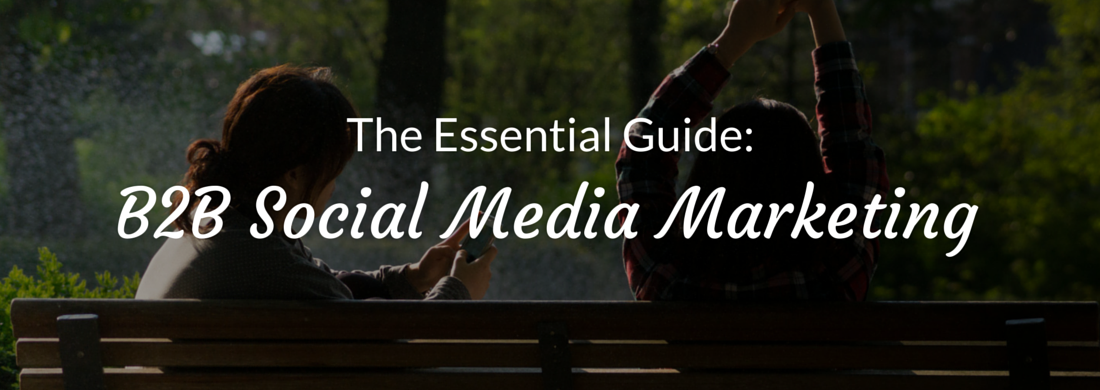
21 Jan The Essential Guide: B2B Social Media Marketing
There was a time where I had a stubborn outlook on social media marketing in the B2B world. I simply thought it didn’t work, that the traditional methods are ineffective for B2B businesses. This was way back in 2011, and my opinion has since changed.
You see, I was looking at it from a B2C point of view. Running Facebook contests work for people like Oreo and Chipotle but how could it work for the B2B space? It perplexed me, but then I changed my perspective.
The truth is, any platform – social or otherwise – can work for B2B businesses, so long as your target buyer personas are there to be found. HubSpot, for example, have an incredibly heavy Facebook presence and they use it very well. Inbound marketers love to use Facebook so it makes sense that they have a presence there.
In this guide, I’m going to show you several tactics and methods to drive traffic, engage with your audience and nurture your leads. But before we go into some of the sexier stuff, you need to do some strategic preparation in order to get the best results, achieve your goals and ultimately – not waste your time.
To make this guide more manageable I’ve chunked it into 5 parts, which are:
- Strategy
- Team
- Tools
- The Funnel
- Scaling
I created this guide to help you overcome any hurdles you may have come across when building a social media strategy in the past. If you’re already running a successful B2B social media marketing system you should still find some gems here.
As I said, this starts with some preparation, so let’s dive in.
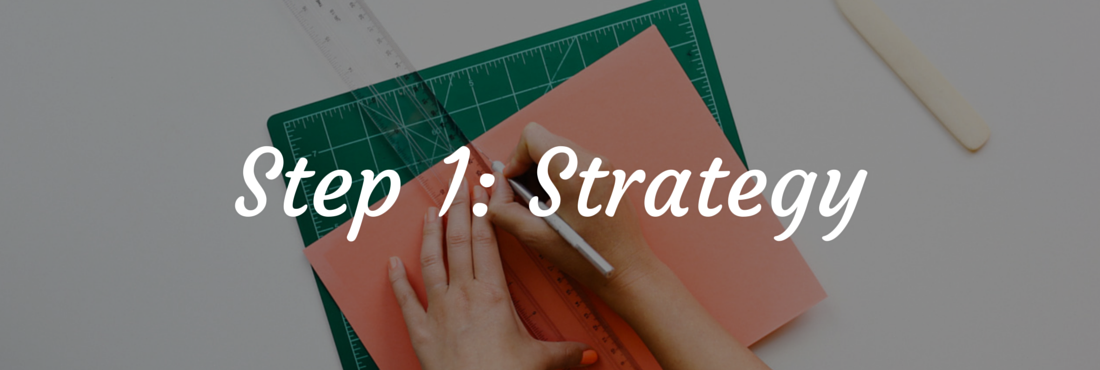
Step 1: Strategy
Even though the marketing world has been talking about social media for some time, many organisations are still making many of the same mistakes.
One of the biggest mistakes is in building a presence on all of the key social media platforms available. This is problematic because it spreads you too thinly, makes you lose focus and ultimately wastes money with very little return.
We need to be strategic, especially in the B2B world. We do this by first defining our goals, figuring out where our audience can be found and looking at the platforms available to us from there.
As you build your strategy, you should be able to quantify and be confident in your decisions. This step isn’t to show you how to execute your B2B social media marketing efforts, but rather point you in the right direction.
Social media marketing goals
Social media shouldn’t act as a silo away from your overall marketing strategy. Instead, it should feed into everything you’re already doing.
There are several ways that social media can integrate into the rest of your marketing plan:
- Drive organic social traffic
- Promote your content
- Connect with influencers
- Drive paid traffic
- Nurture leads
These are some of the most popular ways that organisations use social platforms to help reach their own business goals. So the first step, then, is to figure out what your own objectives are.
Let’s look at some potential scenarios. If you’re doing a lot of content marketing, creating high-value blog posts in order to drive traffic and capture new top-of-funnel leads, then there are a couple of ways you can use social media to assist these efforts.
Start by include sharing buttons on your posts to make sharing easy. You may want to connect and build relationships with key influencers in your market to help promote your content to their own following. You could also use paid amplification, such as Twitter’s ad platform, to expand your reach.
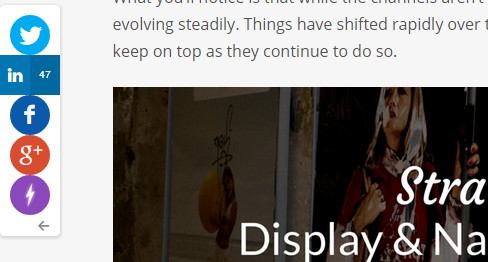
These pieces all fit into two parts of a typical strategy – which are driving traffic and capturing leads. Of course, you can’t use social media alone to capture leads, and that’s where content comes into play.
So think about your goals and how they fit into your overall strategy, then keep these in mind as you build upon your overall strategy.
Finding your audience
Now you know why you’re using social media as part of your B2B marketing strategy, you need to find out which platforms your audience are on. The most obvious B2B social media platforms are Twitter and LinkedIn, but don’t be fooled. This isn’t a limitation, and as long as your buyer personas can be found on other platforms, you should be targeting them.
I mentioned HubSpot at the beginning of this guide, who use Facebook as a platform of distributing their content and connecting with their audience. That’s because their audience – savvy marketers who are passionate about inbound marketing – are active on there.
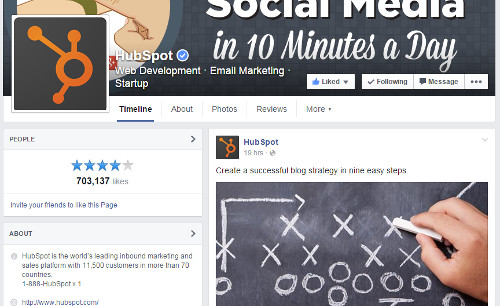
There are several ways you can find out which platforms your audience are on. The first is to ask them as part of a survey, or when talking to them day to day. The other is to visit each social media platform and do some investigation.
Let’s start with LinkedIn, as most people who operate on a B2B level can usually be found there. Start by taking a segment of your clients and searching for them. Go into their profiles and see how active they are, what groups they’re members of and whether they’re active there.
This can be huge in terms of adding more meat to your buyer personas. Things such as skills, the groups they’re part of, organisations they follow and general interests are all gold in terms of profiling your clients.
Investigate further by checking out the above groups and see who else is on there. Do they fit in with your overall personas? You could also do a search for the job titles of your personas. If there’s a high number of results then you can be fairly confident this is a platform to chase.
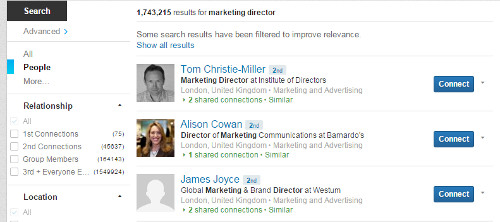
Investigate with other platforms in this way. Check out Twitter and see if your customers are there. Are they very active? Do they have an active following? Perform searches similar to what you did on LinkedIn based around job function, interests and other keywords related to your personas.
Try this with Facebook, Google+ and any other platform you think may be relevant to your organisation. Facebook may be trickier, as you might want to keep distance between you and your client personally, but you can certainly find out if they’re there.
Competitor analysis
Figuring out what the competition is doing is key to your strategy. If they’re already on certain platforms with a strong following then you can be sure that those platforms are worth chasing.
First of all, make a list of your competitors and all of their social profiles. Find the top two or three platforms where they are most active. Make a note of what they’re using it for.
Are they using it as a platform to share content? Connecting with their clients, prospects or influencers? Make a note of patterns and what they’re using this platform for.
Pay attention to both company and individual activity on LinkedIn especially. As the old saying goes, keep your friends close and your enemies closer, so don’t be afraid to connect with key contacts from your competitors’ organisations.
The activity that your competitors are doing will be a good guide for your own strategy once you get started. Posting frequency, profile setup and the messaging are all things you should monitor. Seeing how popular their content is (tweets, updates etc.) will help guide you further.
Setting up on your chosen platforms
Once you know which platforms you want to focus on, you’ll need to begin building up a presence. This is where things can get time consuming, as many organisations spread themselves too thinly by focusing on more than one platform at once.
We’ll talk about resources in the next section, but in the first instance (especially if you’re just getting started) you should focus on just one platform. Choose the one that you think would have the most impact.
There are some common elements that are shared across most social media platforms that you should optimise for, which include:
- Profile picture; which would usually be of your company logo
- Cover image; you can take advantage of this space by including a call-to-action or other information
- Bio; include a summary of your company, including any USP’s or value propositions. The space you’re given for this will vary across platforms
- URL; put your website URL here. You get extra points if you make the landing page relevant to where the user came from
- Pinned update; many platforms allow you to pin your posts, tweets etc. to the top of your feed. This is particularly useful if you want to put focus on a particular offer.
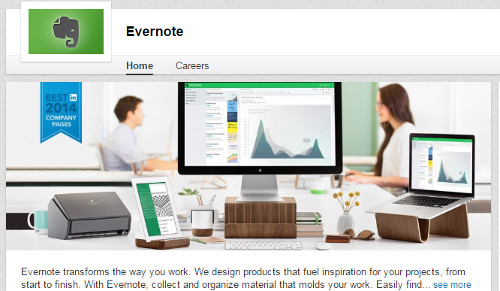
These are the most common elements, and you’ll find that each platform has their own ways of dealing with information, but if you’re smart you can use these to your advantage. Calls-to-action can be found in the most unlikely of places.
Optimising the visual aspects of your social profiles is important, as people have come to expect a level of quality from brands and those they do business with. Make sure you optimise your imagery for each social network. Check out this useful article that provides image dimensions for each platform to make sure you get it right.
Once you’ve got everything set up help your employees, closest clients and inner network to get connected and spread the word. Include a link on your website, email signature and other owned media.

Step 2: Team
We’ve talked about the risks of spreading yourself too thin, and that it’s best practice to focus and establish yourself on one platform at a time, but what if you have further resources to invest into a B2B social media marketing strategy?
There are two options here. The first is distributing the efforts among your internal team, while the other is hiring an agency to help you out. In this step we’re going to cover the pros and cons of both, as well as the importance of testing.
The importance of testing
The beauty with most digital marketing channels is that it’s easy to invest a small amount of resources to see if a channel is worth pursuing. If you test efforts on a platform and see the needle moving in terms of your goals, then scaling will make sense.
Instead of going through specifics of what to test, it’s best to learn this methodology and apply it to various social media marketing experiments. That way you can apply it to new avenues that are added to social platforms well into the future.
Right now, for example, we’re testing LinkedIn’s Pulse platform for syndicating our own content and driving traffic to our blog. We’ll try a few different approaches before scaling or dumping it altogether.

Now you’ve chosen which platform you’re going to start with, you need to figure out how to use it to engage with your audience. To do this, look at what the platform has to offer. For instance, LinkedIn has groups, company profiles, the Pulse platform for content and the ability to connect with people directly – among many more features.
Knowing this, we can prioritise the activity we’re going to test and create experiments. Experiments can be recorded on a simple spreadsheet, where you’ll note the activity, goals, metrics and results. It’s a simple but effective way of keep your eye on the ball and keeping others in your team and organisation clued up on what’s happening.
Set some KPIs so you can keep track of how well your experiment is doing, and to define what success looks like to you. Don’t fall into the trap of basing decisions on scaling up on a platform or tactic on whether you meet these KPIs. Even if you fall short, if the numbers are there then it’s likely you just need to refine the activity.
Resources
It’s easy to waste a lot of company money when embarking on implementing a B2B social media marketing plan. Not to mention wasted time. This is why it’s important to test, but which resources go into testing this in the first place?
When planning your social strategy, sit down with your marketing team and agree on commitments upfront. Decide who will be putting in the time on a daily basis for certain activities, who will create the processes and who will be building any automated systems.
If you need to get outside help, and you have the budget to do so, then having a development team at your disposal can be incredibly useful when you want to automate certain efforts or take advantage of particular features via any APIs that are available.
Agency vs. in-house
After analysing the available resources within your organisation, you might realise it makes more sense to outsource your efforts. There are pros and cons to this, which you should be aware of.
First of all, many agencies may implement a blanket service that includes a certain amount of posts, updates etc. for your social profiles. This can be quite detrimental, as it doesn’t necessarily contribute to your overall goals and is more of a branding play.
Others may tailor the service to your requirements but may not agree to any KPIs or targets based on your key metrics. These days, the best agencies will agree, at the very least, on KPIs based on social metrics or traffic.
The best thing to do is select 3 to 5 of the best agencies that you feel are relevant to you and your organisation and get them to pitch their proposals. Say upfront that there are specific results you’re expecting, and see what they can commit to.
If something doesn’t sit right do try and negotiate on certain activities, but the majority of the time most agencies will know what they’re doing. Some tactics may seem counter-intuitive, but as long as it’s not completely farfetched then trust in who you’re hiring to do the job.

Step 3: Tools
There are various tools and software out there, both free and premium, that will make your B2B social strategy a lot easier to run, manage and scale in the long run.
Here’s another mistake many marketers make; asking “what tools should we be using?” instead of the more important question “what tools will make our job easier and get us closer to our goals?”
There are hundreds of tools out there that help marketers run their social media campaigns, but with all the noise it’s tough to know where to start. As you started with a strategy, this is going to be a lot easier.
You’re not wasting your time on tools that you feel you should be using, and instead using those that aid you in what you’re already doing.
In this step, I’m going to list out several tools that work well, but you should only put your time into those that you believe will fit in with your current strategy. To make sure of this, I’ll give case scenarios for each of them.
HootSuite
HootSuite is a service that allows you to manage several accounts from the same platform. This is perfect if you have multiple accounts under the same social network, or if you manage several accounts for your clients.
There are loads of features that make HootSuite powerful, such as bulk scheduling using uploaded .CSVs and analytics, but with that comes a highly complex interface. It’s not incredibly user friendly and might be quite overwhelming.
Still, if your goals involve driving traffic with your content, then this could be handy. Advanced scheduling helps you “set and forget” updates, and the multi-profile management is perfect for when you’re using more than one social platform.
TweetDeck
TweetDeck is similar to HootSuite in its multi-profile approach, but as the name suggests, the difference is it’s used solely for Twitter.
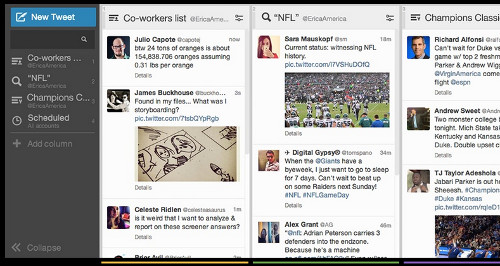
With TweetDeck, you can create different “decks” that feeds through search results, mentions of certain keywords and lists. This is perfect if you’re connecting with customers, leads or potential prospects one-on-one through Twitter.
ManageFlitter
Another tool for Twitter, this allows you to get a view of your followers and see which are inactive, aren’t following back and gives you the option to bulk unfollow.
These features are particularly handy if you’re positioning yourself as an authority and want to keep a good follower to following ratio. It also purges your feed of anyone that might be clogging it up.
Buffer
A great tool for scheduling, Buffer allows you to share content around the web on the fly. With the Chrome extension you can schedule a tweet through Chrome, share content and “buffer” tweets straight from Twitter itself – perfect for the purists.
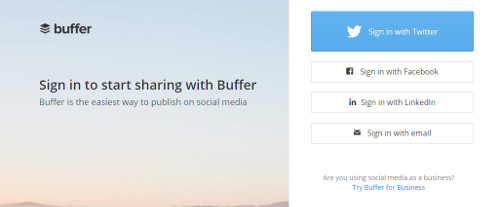
A great tool to use if you’re using social to distribute your content and drive traffic. It saves a lot of time and has a cleaner and more user-friendly interface than most.
Fanpage Karma
If you’re using Facebook, it’s often hard to see all of your most important metrics in one place. Enter Fanpage Karma. You can see the level of engagement, response time to comments and overall growth all from one dashboard.
If you’re testing out Facebook as a platform for your B2B social media marketing plan, this can be a great way to see if it’s working.
Klout
This is one of the best known tools out there, and helps you measure your overall social influence. It pools your level of engagement from all of your social profiles and gives you a Klout score.
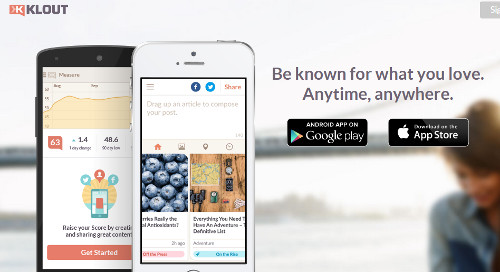
Although it’s quite superficial, it can be useful for competitive research. You can also use it to find influencers in your space to connect with, which is perfect if you’re trying to get your content distributed further.
Rival IQ
Speaking of competitive research, Rival IQ is one tool that can make this easier. It takes a look at selected organisations and monitors their activity across all social networks.
When starting out, this can be a great tool for getting a handle on what your competition is doing. You can see what days of the week, time of day they’re posting and the frequency they’re posting. It’ll really steer you in the right direction when planning out your strategy.
Mention
As you begin to grow, it might be hard to keep track of what people are saying about you and your brand. Enter Mention.
Mention tracks what people are saying about you all across the web, which doesn’t just mean social networks. If someone is talking about you in an article, news piece or any other online property, mention will let you know.
If you’re trying to enable your sales team to add social selling to their toolkit, then this might help them do just that. Whenever someone asks a query about your brand online, your salespeople can be there to intercept. We’ll get into this in more depth in the next section.

Step 4: The Funnel
It’s one thing to get your goals in order, but you’ve also got to focus on the path that your audience is going to take to get to you. This is where designing a good social funnel comes into play.
Funnels are the way we visualise and design the customer journey for all marketing channels. They allow us to put together a logical process that guides our users, leads and prospects from awareness to close.
The same principle goes for your social media marketing. You need to know the path that your audience will take to get to the goal that you set out in the planning stage. It starts by understanding the customer journey.
Mapping the customer journey
In your research, you should have noticed how your buyer personas behave over social channels. Are they sharing content, asking questions and talking to one another? Do they use it as a way of communicating to the brands they do business with?
These are all things you should note, as it will allow you to direct your strategy and, just as importantly, create a customer journey towards your goals.
Let’s look at an example path someone might take. If your buyer personas can be found on Facebook, you might run some ads to distribute your content further. So the customer journey in this case may look like this:
Facebook Ad > Content > Sign Up > Download eBook > Consultation
Knowing the steps your potential leads and customers are going to take is useful in building and optimising your social media strategy.
Social content
There’s nothing new knowing that people don’t want to be sold to on social media. If you’ve been using social networking for some time, you might have seen very offer-driven tweets and posts in the early days.
These days, however, that simply doesn’t work. Sure, you can include a call-to-action in your profile, but the things you share need to be valuable. That means the content that you create as well as others related to your industry.
Sharing other people’s content helps to build a connection with them, which is especially powerful if you’re trying to establish relationships with the influencers in your space.
Sharing your own content, however, means driving traffic to your own site. Both of these methods have their benefits, so be sure to mix things up.
Enabling your sales team
Both potential and current customers can be found on social media. This is great from a customer service perspective (which is a topic for an article in itself), but can also be effective for sales.

If you generate a lead who is active on Twitter, LinkedIn or other social platform, then your sales team can add further value to that lead. As long as that leads is sales-ready and the conversation has already begun, this can work very well.
Training and enabling your sales team to use social media means giving them the ability to nurture and add value during the sales process. You’re showing them you get them and that they’re not simply a metric.
This means your sales team needs to really listen and elicit personal information during the initial conversations with these prospects. Share content that is valuable to them on both a professional and personal level. This is how solid relationships are made.

Step 5: Scale
Once you’ve run your social experiments long enough to gain results, and can clearly see it’s a channel worth sticking with, then it’s time to scale your efforts up.
Scaling might mean several things. It could mean bringing in new team members to take on the responsibility, or applying new technologies to automate. What it does mean, though, is optimising and growing your efforts in order to increase your results.
Automation
When certain experiments work, the next best step you can take is to build systems around the processes you’ve already built. That way you can automate and scale up as you grow.
There are two obvious methods of automating your social efforts. You can hire new talent to take care of it (or shift your current resources) or use technology to make things easier.
When hiring, you want someone who already understands the social networks that you’re focusing on. They should understand the importance of content in social media, and should also have a full grasp on inbound marketing principles.
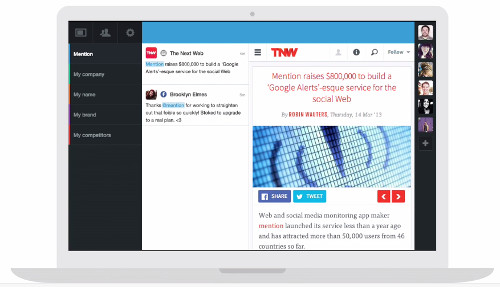
There are various tools out there that will make life a lot easier. For instance, if Twitter is your chosen platform, you could use Buffer to schedule the content you put out there and Mention to track who’s talking about your organisation, team and the content you publish.
This means you and your team don’t need to worry about spending lots of time checking your social accounts on an hourly basis. The updates and content you want to share is already scheduled, and whenever someone gets in touch you’ll be notified instantly.
Check out “Step 3: Tools” above for a complete list of our suggested tools you use. They can really help take a load off of your current resources.
Alternatively, you could go back to what we talked about earlier and bring an agency on board to take care of things. As long as you keep to the points we talked about in “Step 2: Team”, you should be ale to outsource your B2B social media marketing without problem.
Influencers
Sharing your content through your own properties (also known as “owned media”) will only get your message so far. You need to encourage people with their own audience to spread your content for you, too.
Building relationships with influencers take time, and before you try and ask for anything you need to build things up. They say it takes 7 “touch points” for someone to become familiar with you and your brand, and this is no exception.

Some ways that we like to steadily build relationships with our target influencers are:
- Follow them (and hopefully have them follow back)
- Comment on their blog posts
- Tweet at them
- Share their content
Only then do we send a personal email. It’s low-pressure and asks them if they would be interested in checking out our content before it’s published. We make sure it’s relevant to them and that they themselves would find it valuable, not just their audience.
From there, we build an “inner circle” list that we share our content out to. We don’t ask for them to share it, we just simply show them. If they want to share it from there, then that’s a bonus for us.
Conclusion
After I figured out this was of marketing through social media, everything changed. I no longer looked at social media as a waste of time, and built systems based on the five steps above with great success.
When building your own B2B social media marketing plan, make sure you start at the very top. It’s the planning and goal setting stage that will make or break your success with your chosen social media channels.
Once you know where you’re aiming, what goals you’re shooting for and the metrics that will measure your success, everything becomes a lot easier. The guess work is removed.
What’s your experience with social media as a B2B marketing channel? Share your mistakes, lessons and successes with us.




Aaron McKeehan
Posted at 02:35h, 07 MayThanks for the article!